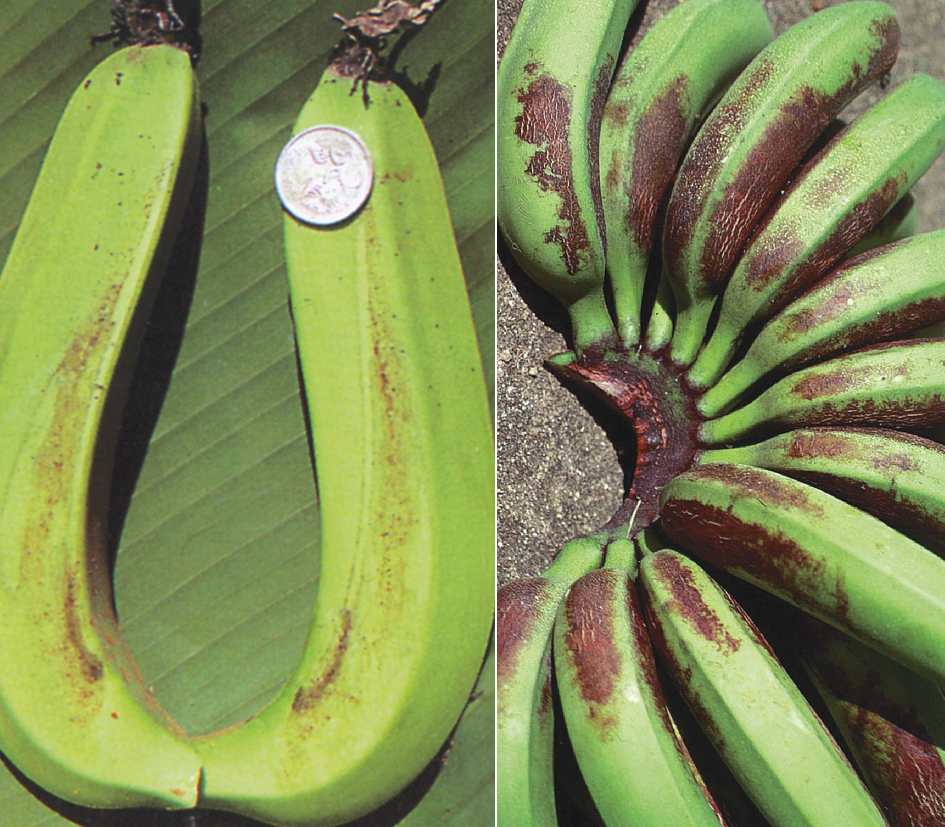Rust or bronzing on fruit
Banana rust thrips
Cause: Feeding by Chaetanaphothrips signipennis from bract fall to harvest causes a rust brown skin discoloration. This symptom should not be mistaken for maturity bronzing, which is more prevalent on the outer exposed areas of the fingers.
Solution: Soil treatments for banana weevil borer will help control the soil thrips population. Treat bunches at the time of bunch covering.
More info:
Banana rust thrips — general information and monitoring and control options
More images
Maturity bronzing
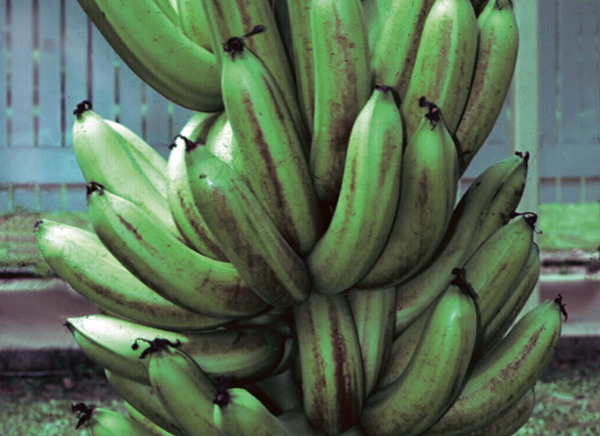
Cause: Oxidation of cell contents, possibly from a water and nutritional imbalance, causes the epidermal cells to discolour, lift and break.
Solution: In the short term, bunches should be harvested early before symptoms become more severe. Avoid water and nutrient stresses in the plant.
More info:
Maturity bronzing—stretching the limits on fruit quality
Spray burn
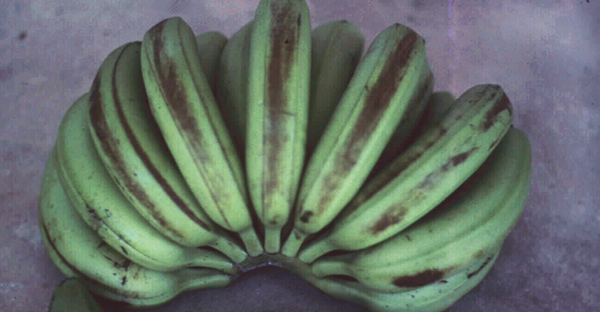
Cause: Incorrect chemical application rates, problems with compatibility or environmental conditions.
Solution: Check that you are using registered chemicals and are applying them at the correct rates. Make sure that your spray application equipment is cleaned regularly.
Silvering thrips
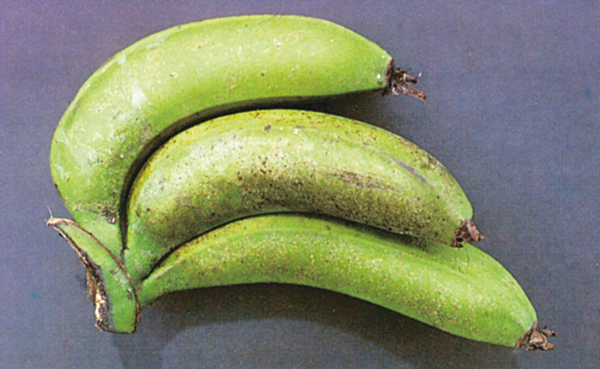
Cause: Feeding by Hercinothrips bicinctus.
Solution: This is a minor and rare pest of bananas grown in north Queensland. No specific treatments are required.
Mites
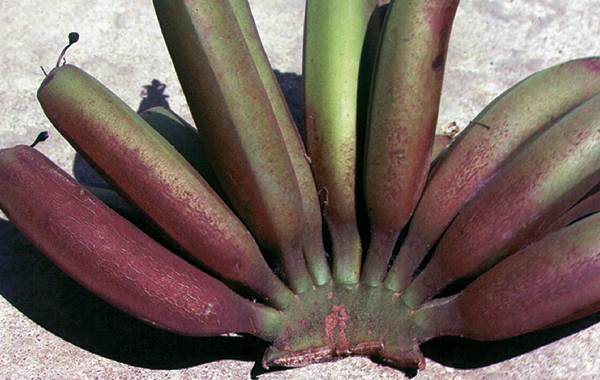
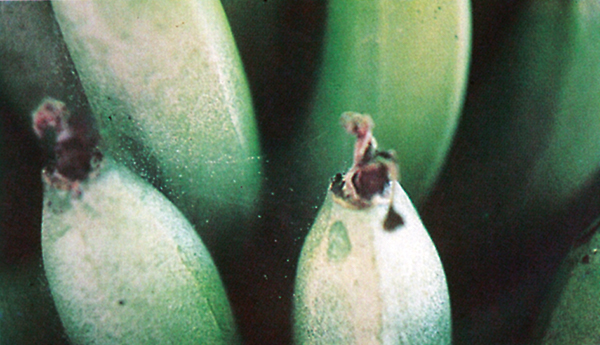
Cause: Banana (strawberry) spider mite, Tetranychus lambi, feeding on the fingers. More severe infestation will result in the damage spreading over the entire fingers.
Two-spotted mites, Tetranychus urticae, feed primarily on the tips of fingers, causing silver-grey superficial damage. Webbing forms ‘bridges’ between heavily infested fingers.
Solution: Severe mite outbreaks are usually the result of poor insecticide management, especially foliar application of disruptive pesticides that destroy beneficial species such as the Stethorus spp. beetle. Treatments with a suitable miticide may be required during periods of hot, dry weather when mite build-up can be rapid.
More info:

